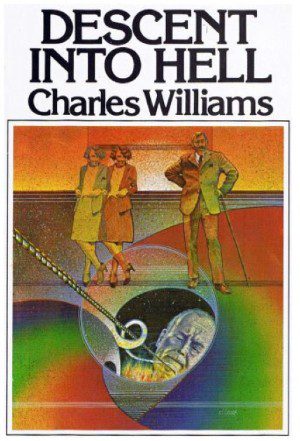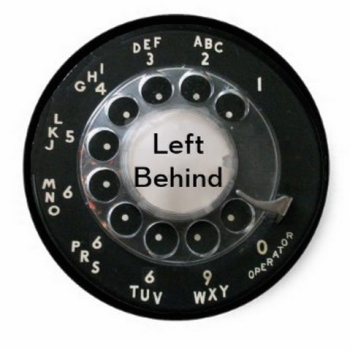I recently linked to an older post on Eleanor Janega’s terrific Going Medieval blog, mentioning that I particularly enjoy when Dr. J gets a bit riled up: “If you want to incur the wrath of a medieval historian, relocate the modern phenomenon of witch-trials to the middle ages,” I said.
So I’m happy to see that entertaining wrath unleashed again here: “You are not, in fact, the granddaughter of the witches they couldn’t burn.”
 It seems the algorithms have miscalculated, presuming that a medieval historian would be just the sort of person who would want to buy a bunch of T-shirts bearing the slogan “We Are the Granddaughters of the Witches You Could Not Burn.” Dr. Janega isn’t having it.
It seems the algorithms have miscalculated, presuming that a medieval historian would be just the sort of person who would want to buy a bunch of T-shirts bearing the slogan “We Are the Granddaughters of the Witches You Could Not Burn.” Dr. Janega isn’t having it.
This slogan at least avoids the cardinal sin of attributing the witch panics to the Middle Ages, but it still manages to get a lot wrong. Such as, for example, the fact that burning was for heretics, not witches. Witches were hanged or — as in the case of poor Giles Corey in Salem — crushed to death slowly.
And, as Janega points out, a good many of those persecuted and executed as “witches” were, like Corey, not women. In some places, such as the Baltics, most of those killed for “witchcraft” were men.
The entire post is a lesson in the history of the witch-trials and witch-hunts from a professor who has become an expert in the subject precisely because she was trying to be an expert on another subject entirely. But since so many people, so frequently, mistakenly claim that the post-Reformation hysteria over “witches” was something “medieval,” it becomes a topic that medieval historians are forced to learn about.
One main point of this lesson is that a big reason medieval people did not conduct witch-hunts and witch-trials was because they had the good sense to realize that witches weren’t real:
The women who were killed during the early modern witch trials were not, in fact, witches. They were just people.
This is not to say that some people accused of witch craft didn’t confess to it on occasion, or maybe even think they were doing some witch ass shit. But that doesn’t mean they actually were doing it.
Medieval people were usually pretty clear on that, unlike the people making these stupid shirts. The monk Regino of Prüm‘s (d. 915) Canon Episcopi in the tenth century, for example, had this to say about the idea that witches flew off at night: “…it must not be omitted that some wicked women, turned away after Satan and seduced by the illusoons and phantasams of demons, believe and profess that, in the hours of the night, they ride upon certain beasts with Diana, the goddess of the pagans, and an innumerable multitude of women, and in the silence of the dead of night traverse great spaces of the earth and they obey her commands as of their mistress, and are summoned to her service on certain nights.” This is an important point. People might think they were doing some pagan shit and hanging out with Diana (seems cool, ngl), but in fact they were just delusional and if they thought this they needed religious intervention because they had been deceived into thinking that they were.
You may have heard of Malleus Maleficarum, the 1486 book arguing for the prosecution of witches. Much of that book was an argument for the new idea that witchcraft was a real and powerful thing that the church should be worried about. That argument didn’t win anybody over until the book was revived centuries later. At the time of its publication, the book was condemned by the Inquisition as heterodox and its author, Heinrich Kramer, was expelled by his bishop for being a sex-obsessed weirdo.
Kramer’s Malleus was the subject of a Halloween lecture by Adam Kotsko, who discusses reasons why we may find this weird old book to be “a tragically relevant document for our times” — a roadmap not for witch-hunters but for capitalism. It’s a fascinating post, but the main point here is that Kramer’s book was not a relevant document for his time, when it was regarded as a nonsensical work by a guy who even creeped out the Inquisition and who escaped punishment for heresy only because his ideas weren’t coherent or sensible enough to qualify as a meaningful threat to orthodoxy.
The church’s attitude toward anyone who claimed to practice witchcraft or sorcery was pretty much the same as that of Rabbi Hanina, whose views we looked at a while back when seeing what the Talmud had to say about Exodus 22:18:
There was a certain woman who was attempting to take dust from under the feet of Rabbi Ḥanina in order to perform sorcery on him and harm him. Rabbi Ḥanina said to her: If you succeed, go and do it. I am not concerned about it, as it is written: “There is none else besides Him.”
Same idea. “I don’t believe you were riding magical flying beasts with Diana because I don’t believe that either Diana or magical flying beasts exist.” The rabbi and the medieval church were monotheists, not monolatrous polytheists. The idea that either Jewish or Catholic orthodoxy required belief in the existence of the goddess Diana would have seemed confused and confusing to them.
That was the prevailing view until after the Reformation, as Janega writes:
In the early modern period things got a lot worse in this arena as they did with several many areas of life. … Suddenly you had a bunch of Protestants around the shop, and they were in a religious arms race with the Church to prove who was the most holy. And a great way of proving you were holy was to go around yelling that women were witches or something. They still weren’t. Instead they were women who had money that other people wanted. Or women who performed abortions. Or women who begged. Things of this nature.
And occasionally they still sorta thought they were witches? Or sometimes told people that to scare them. During the Pendle witch trials, for example, Alizon Device (d. 1612) absolutely told a court that she had sold her soul to the Devil and had lamed a certain John Law when he refused to sell her some pins. Anyway she got killed, a lot of her family got killed. A bunch of people got killed. But they weren’t witches. Alizon just … had a lot going on. Because you cannot in fact sell your soul to the devil and get the powers to take out people’s legs in return. This is a fact.
It’s even more of a fact that the great majority of people who were killed for witchcraft did not think they were witches. In the majority of cases if they confessed that they were witches it was usually because they were tortured repeatedly and at length in order to obtain a confession, as was the case in the Salem witch trials, for example. These were people who faced horrifying punishment for absolutely no reason, and then were killed.
Read the whole thing to get the full footnote-and-link experience.
That post provides an interesting context and contrast to the terrific ghost story Philip Jenkins shares in a Halloween post over on the Anxious Bench. This is very much not a tale of “medieval” superstition, but of the multiplicity of new religious perspectives that arose much later, once “you had a bunch of Protestants around the shop.”
Here is Jenkins summary:
Henry Bowen was a Puritan soldier in seventeenth century Wales, who is campaigning in Ireland. He had developed a very radical and skeptical system which might or might not constitute outright atheism, which was of course regarded as a total blasphemy by the Puritan standards of the time. Meanwhile, back in Wales, his faithful Baptist wife Katherine Bowen keeps receiving terrifying apparitions of her husband, or perhaps of a demon preparing to be that individual. With its spectral apparitions, the case reads uncannily like many witchcraft affairs of the time, and it is always on the verge of developing into one. The whole question of such “spectral evidence” was at the heart of the later Salem cases in New England.
For early commentators on the story, notably the great Puritan Richard Baxter, the story was doubly valuable in combating skepticism and atheism or infidelity. From a pious perspective, Bowen’s skeptical beliefs had opened his family to demonic assault, and at the same time, the documented reality of the hauntings proved that such supernatural incursions could and did occur.
You’ll want to click over to read Baxter’s 1655 account of these purported hauntings. It’s deliciously creepy stuff that seems like it would, as Jenkins says, make an excellent horror film. (And I second his suggestion of casting Toni Collette as Katherine because casting Toni Collette in anything is never a mistake.) The real-life cast of characters here includes John Miles who, Jenkins notes, “had strong connections with Puritan New England,” and this tale reads like a prequel to the witch panics that would unfold there just a few decades later.
Jenkins discussed this ghost story several years ago in a scholarly paper which he summarized in blog form here: “Infidels, Demons, Witches, and Quakers.” There he provides more background on the haunted Bowen family:
One of my discoveries about Colonel Bowen is that his sister was an outspoken Quaker militant, who publicly denounced the Puritan clergy of the day and their churches – their “steeple houses” that pretended to be houses of God. One minister actually struck the woman for theeing and thouing him. So right away, the relationship within the Bowen family becomes a highly theological struggle, between Seekers, Ranters, and Quakers on the one hand, and orthodox Puritans and Baptists on the other. Katherine Bowen belonged firmly to the orthodox side of the divide, her husband and sister-in-law were at the other extreme. Family dinner conversations must have been, well, eventful.
Adding to the brew, the family’s Baptist pastor, John Miles, was a staunch upholder of orthodoxy, and a bitter enemy of heresy as he defined it.
Miles certainly thought of himself as “a staunch upholder of orthodoxy, and a bitter enemy of heresy as he defined it.” So did Baxter. But their understanding of both of those things — “orthodoxy” and “heresy” — included many relatively recent new beliefs. Their “orthodoxy” was, just a few generations earlier, something most theologians regarded as delusion that was too outrageous and weird to merit recognition as formal heresy.
Henry Bowen’s skepticism toward reports of hauntings and apparitions was, to Miles and to Baxter, evidence of his irreligious radicalism. To Regino of Prüm or to Rabbi Hanina, their belief that apparitions and hauntings were genuine would have seemed like evidence that Miles and Baxter were the irreligious radicals in this story.
I’ve an inkling that the novelist Charles Williams was familiar with Baxter’s chronicle of the Bowen haunting. The spectral doppelganger in Baxter’s account seems a likely influence on his delightfully strange Descent Into Hell. If you’d asked Williams if he thought a story like Katherine Bowen’s was “real,” I suppose he’d have said Yes, but with a very different understanding of what “real” means there than how either Katherine or Baxter understood the term.













